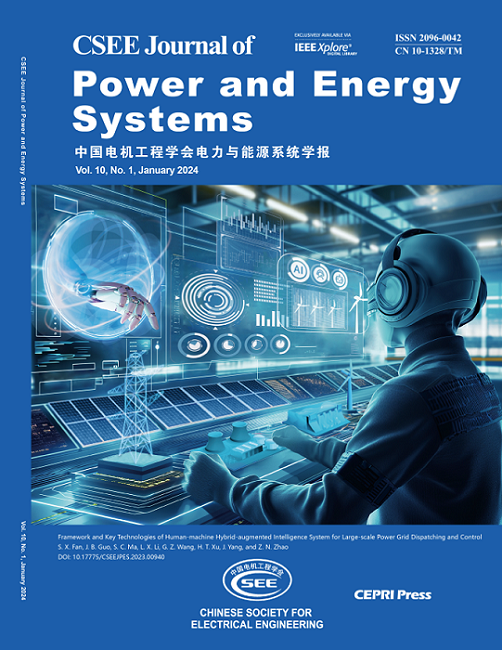用于非对称双向功率流运行的混合模块化智能变压器
IF 5.9
2区 工程技术
Q2 ENERGY & FUELS
引用次数: 0
摘要
低压配电网络中可再生能源的存在可能会导致配电变压器(也称为智能变压器(ST))出现双向电力流动。因此,智能变压器必须具备双向运行的能力。然而,与正向功率相比,反向功率较小,因此设计双向容量相同的 ST 会增加硬件成本并降低系统效率。本文提出了一种混合模块化 ST(H-ST),由基于单有源桥的串联谐振转换器和双有源桥混合使用组成,而不是完全使用传统固态变压器中采用的单向或双向转换器。基于所提出的 H-ST 架构,分析了反向运行模式下级联模块间功率不平衡的影响,并结合所提出的架构特点,提出了基于无功功率补偿的有效解决方案。仿真和实验结果清楚地验证了理论分析的有效性和可行性。本文章由计算机程序翻译,如有差异,请以英文原文为准。
Hybrid Modular Smart Transformer for Asymmetrically Bidirectional Power Flow Operation
The presence of renewable energy resources in LV distribution networks may lead to a distribution transformer, also known as a Smart Transformer (ST), experiencing the bidirectional power flow. Therefore, the ST must have the capability to operate in both directions. However, the reverse power is less as compared to the forward power, thus the design of ST with the same capacity in both directions increases the hardware cost and decreases the system efficiency. This paper proposes a Hybrid-modular-ST (H-ST), composed of a mixed use of single active bridge-based series resonant converter and dual active bridge instead of complete use of uni-or bi-directional converter adopted in the conventional solid-state-transformer. Based on the proposed H-ST, the impacts of power imbalance among cascaded modules in reverse operation mode are analyzed and then an effective solution based on reactive power compensation combined with the characteristics of the proposed architecture is adopted. The simulation and experimental results clearly validate the effectiveness and feasibility of the theoretical analyses.
求助全文
通过发布文献求助,成功后即可免费获取论文全文。
去求助
来源期刊

CSEE Journal of Power and Energy Systems
Energy-Energy (all)
CiteScore
11.80
自引率
12.70%
发文量
389
审稿时长
26 weeks
期刊介绍:
The CSEE Journal of Power and Energy Systems (JPES) is an international bimonthly journal published by the Chinese Society for Electrical Engineering (CSEE) in collaboration with CEPRI (China Electric Power Research Institute) and IEEE (The Institute of Electrical and Electronics Engineers) Inc. Indexed by SCI, Scopus, INSPEC, CSAD (Chinese Science Abstracts Database), DOAJ, and ProQuest, it serves as a platform for reporting cutting-edge theories, methods, technologies, and applications shaping the development of power systems in energy transition. The journal offers authors an international platform to enhance the reach and impact of their contributions.
 求助内容:
求助内容: 应助结果提醒方式:
应助结果提醒方式:


